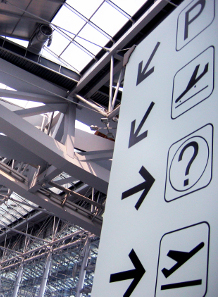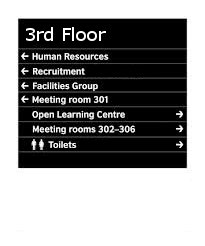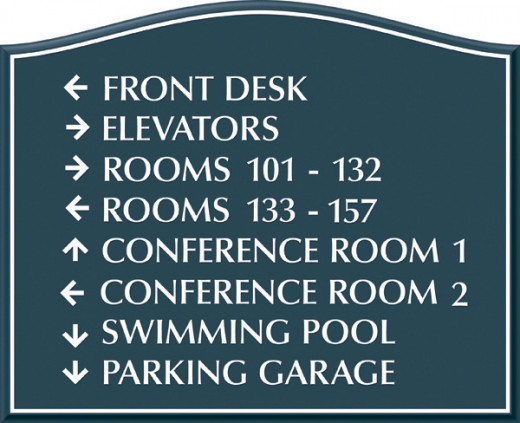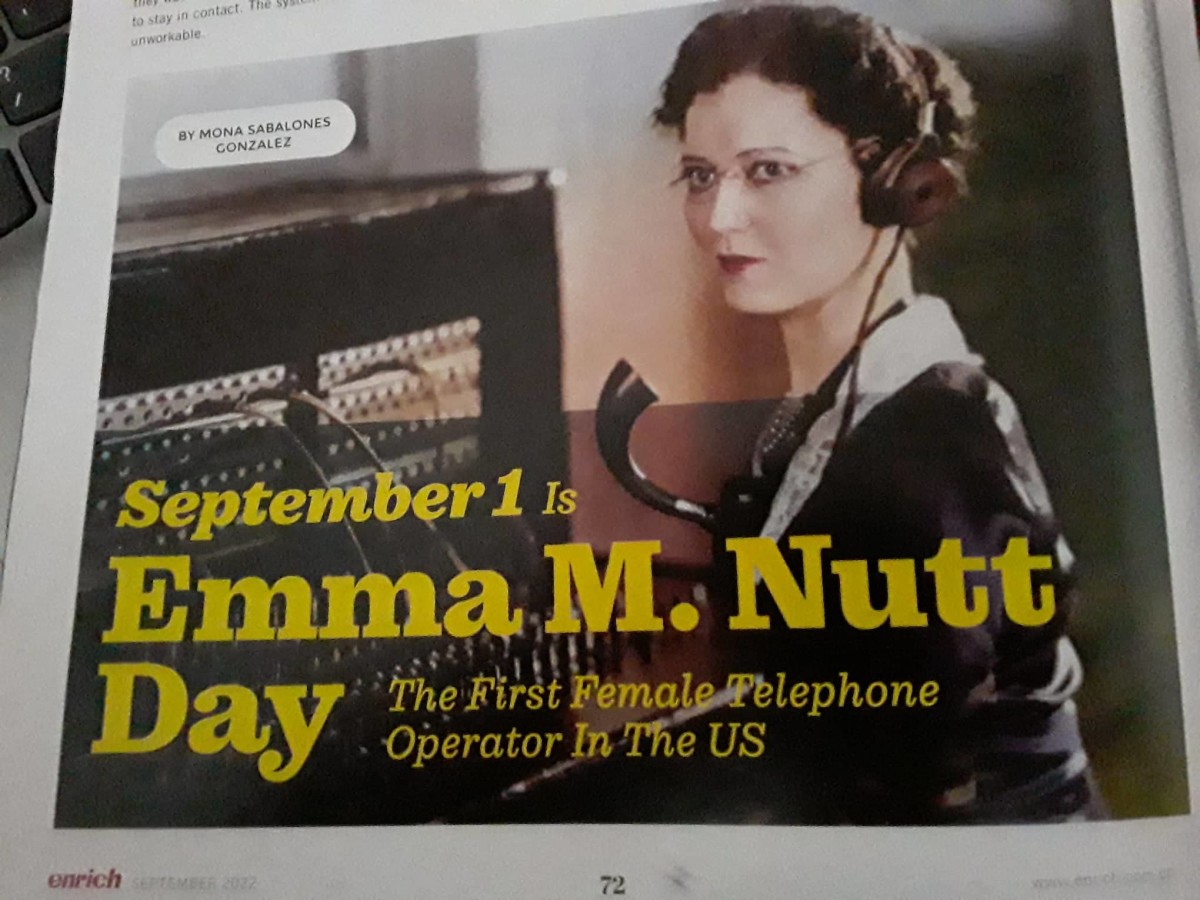What Kinds of Elements are Often Found on Directional Signage?

The Basics of Directional Signs
Directional signs are everywhere. You see these in train stations, in airports, in malls and in office buildings. You also see these in schools, in hospitals, in stadiums and even in amusement parks. In short, these signs are seen in places where lots of people converge.
These can come in many different forms, with majority in the usual rectangular shape that people are accustomed to seeing, and a few others in rather unique and interesting guises. Still a few more of these are made to look like signs that are used for roads, with the pointy arrow ends and the post. These can also be seen mounted in many different ways, with quite a number hung from overhead and still quite a few mounted on walls and in hallways.
These signs can be made using different materials, with some using plastic, others using wood, and still a few more using corrosion resistant metals. The choice of materials for these usually depends on a number of factors that include the design ideas of the establishment owner, the location of these signs and, of course, the budget allocation for such a feature.

Commonly Used Elements on These Directional Signs
All of these directional signs, no matter where they are found, are used for one very specific reason, and that is to direct people to where they wish to go. This common thread, despite the differences in shapes, mounting and design, leads to the commonality in certain elements found on all directional signage you see being used today. What are these various, commonly used elements that are on almost all directional signs that are in use these days? Here are some of them:
Room Names or Facility Names – these are on all these signs since, obviously, these are what people will be looking for. How these are arranged and how these are written will depend on the design ideas of the building or establishment using such signs. You can find the room or the facility you are looking for by simply checking out these signs. If these signs are found in multi-level buildings, you can usually see the floor number above the list of rooms or facilities that are found on that particular floor.
Floor Number, Level Number or Level Name – while not all directional signs do carry this particular element, those that are used in multi-level buildings have this on them. You can often see these posted near elevators or stairs since people use this to remind themselves where they can find the room or facility they are looking for on that floor. This is often used as a secondary reference to the directional signage or directories found at the lobbies and main entrances of these buildings.
Directional Arrows – these are used to point people in the right direction and can be found on all directional signs. Sometimes, these can be seen with a bend in them indicating that you need to make a turn somewhere ahead to get to where you want to go. If a number of rooms or facilities can be found in one specific direction or area of the building, these can sometimes share only one arrow, depending of course on the preference of the sign designer or establishment, if this is what they want.
Pictograms – not all directional signage have pictograms on them since not all are used to show directions for common facilities like bathrooms, escalators, elevators and the like. Those that do show people where these facilities are usually carry easy to recognize pictograms such as the male and female symbols used for bathrooms, the wheelchair symbol for accessibility options, bus and taxi images for areas where these can be found and other internationally recognizable symbols. You can often see these on overhead signs in malls, airports and train stations. You can also see these in stadiums, auditoriums and other similar locales.
These are some of the more commonly used elements that can be found on directional signage. Whether these are used indoors or outdoors, the presence of such elements helps the sign achieve its primary goal, and that is to show people where to go to get to the places they are looking for.








